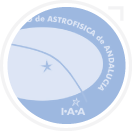CO2 non-LTE limb emissions in Mars' atmosphere as observed by OMEGA/Mars Express
We report on daytime limb observations of Mars upper atmosphere acquired by the OMEGA instrument on board the European spacecraft Mars Express. The strong emission observed at 4.3m is interpreted as due to CO2 fluorescence of solar radiation and is detected at a tangent altitude in between 60 and 110km. The main value of OMEGA observations is that they provide simultaneously spectral information and good spatial sampling of the CO2 emission. In this study we analyzed 98 dayside limb observations spanning over more than 3 Martian years, with a very good latitudinal and longitudinal coverage. Thanks to the precise altitude sounding capabilities of OMEGA, we extracted vertical profiles of the non-local thermodynamic equilibrium (non-LTE) emission at each wavelength and we studied their dependence on several geophysical parameters, such as the solar illumination and the tangent altitude. The dependence of the non-LTE emission on solar zenith angle and altitude follows a similar behavior to that predicted by the non-LTE model. According to our non-LTE model, the tangent altitude of the peak of the CO2 emission varies with the thermal structure, but the pressure level where the peak of the emission is found remains constant at approximate to 0.03 0.01Pa, . This non-LTE model prediction has been corroborated by comparing SPICAM and OMEGA observations. We have shown that the seasonal variations of the altitude of constant pressure levels in SPICAM stellar occultation retrievals correlate well with the variations of the OMEGA peak emission altitudes, although the exact pressure level cannot be defined with the spectroscopy for the investigation of the characteristics of the atmosphere of Venus (SPICAM) nighttime data. Thus, observed changes in the altitude of the peak emission provide us information on the altitude of the 0.03Pa pressure level. Since the pressure at a given altitude is dictated by the thermal structure below, the tangent altitude of the peak emission represents then an important piece of information of the atmosphere, of great value for validating general circulation models. We thus compared the altitude of OMEGA peak emission with the altitude of the 0.03Pa level predicted by the Laboratoire de meteorologie dynamique (LMD)-Mars global circulation model and found that the peak emission altitudes from OMEGA present a much larger variability than the tangent altitude of the 0.03Pa level predicted by the general circulation model. This variability could be possibly due to unresolved atmospheric waves. Further studies using this strong CO2 limb emission data are proposed.































